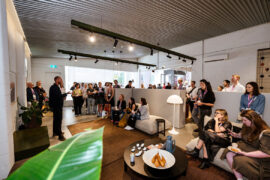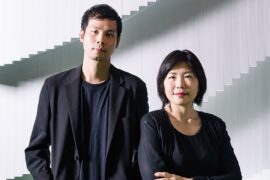A major breakthrough for gender equity in the profession of architecture has been made with the Australian Institute of Architects’ National Council officially approving the organisation’s first Gender Equity Policy.
A major breakthrough for gender equity in the profession of architecture has been made with the Australian Institute of Architects’ National Council officially approving the organisation’s first Gender Equity Policy.
December 9th, 2013
Institute President and gender equity advocate, Paul Berkemeier, was proud to announce council’s decision following its meeting on Thursday 5 December.
‘The disparity between male and female representation within the profession has been well documented and a growing concern not only for the Institute as the industry’s representative body but also for members of both genders.
‘It is with this in mind that I am delighted to share the Institute’s new Gender Equity Policy which will provide the foundation for improving operations within the Institute through our governance, programs and services, employment and leadership. The policy will assist our members and the profession more broadly in employing gender equitable practices in their day to day operations,’ Mr Berkemeier said.
The policy establishes ten best practice principles designed to maximise fair and equitable access to opportunities and participation for women within the architecture profession.
The development of the policy follows the Institute’s involvement since 2011 with the Australian Research Council funded Equity and Diversity in the Australian Architecture Profession: Women, Work and Leadership project, which is led by a large collaborative team of eight scholars and five industry partners.
Studies conducted as part of this project have provided qualitative evidence confirming that the participation rate of women in the profession is disproportionately low compared to the number of women graduates in architecture highlighting the specific need to encourage and provide guidelines for the industry to adopt a comprehensive and ethical approach to establishing gender equality across the field.
Immediate Past President and Chair of the Institute’s Gender Equity working group, Shelley Penn noted: ‘Despite similar numbers of female and male graduates for the last three decades, women are less likely to register as architects after graduation (only about 20 per cent of registered architects are women). We only rarely become directors of practices and are also less likely to participate in the profession more widely; for example, by joining the Institute, where less than 30 per cent of members are women.
‘As careers progress, the barriers for women increase, as evidenced by lower numbers in senior positions and higher attrition rates and the need for part time or flexible work hours when juggling career and parenthood affects women most heavily. This policy will go a long way in readdressing these imbalances.’
In addition to approving the policy, National Council endorsed the establishment of a National Committee on Gender Equity.
Responsible for ensuring and guiding the implementation of the policy and providing recommendations on additional actions, initiatives and programs, the committee will further drive gender equality within the architecture industry.
Visit architecture.com.au for access to the Gender Equity Policy.
INDESIGN is on instagram
Follow @indesignlive
A searchable and comprehensive guide for specifying leading products and their suppliers
Keep up to date with the latest and greatest from our industry BFF's!
The new range features slabs with warm, earthy palettes that lend a sense of organic luxury to every space.

A curated exhibition in Frederiksstaden captures the spirit of Australian design

Gaggenau’s understated appliance fuses a carefully calibrated aesthetic of deliberate subtraction with an intuitive dynamism of culinary fluidity, unveiling a delightfully unrestricted spectrum of high-performing creativity.

How can design empower the individual in a workplace transforming from a place to an activity? Here, Design Director Joel Sampson reveals how prioritising human needs – including agency, privacy, pause and connection – and leveraging responsive spatial solutions like the Herman Miller Bay Work Pod is key to crafting engaging and radically inclusive hybrid environments.
Metroweave draw on special expertise and a wide network of contacts to deliver the finest fabrics available.
Zenith Interiors celebrated the opening of their Auckland and Wellington showrooms at the end of July. The theme was Top Hats and Tiaras – which guests interpreted in many fun and different ways! Cocktails and Candy Lane Dancers kept the crowd entertained well into the night.
The internet never sleeps! Here's the stuff you might have missed

Melbourne is the destination and Saturday 6th September is the date – get ready for this year’s one-day design extravaganza with a full guide to what’s on.

Wonderstruck is currently on view at the Queensland Art Gallery | Gallery of Modern Art (QAGOMA), an exuberant statement of flamboyant possibilities.

Practicing architecture and giving back to the next generation of students, Jenchieh Hung of HAS design and research is ensuring that the landscape of Thailand is in very good hands for the future.

The INDE.Awards 2025 has crowned Sirius Redevelopment by BVN as the winner of The Multi-Residential Building, sponsored by CULT. This ambitious project redefines urban living in Sydney’s historic Rocks precinct while preserving heritage, reducing embodied carbon, and elevating residential design.